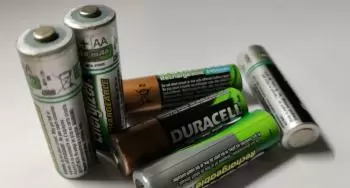
The generator of an electric circuit is a device capable of creating a difference between the negative and positive terminals. An electrical generator is a device that converts a type of energy into electrical energy so that this energy can be used in an external electrical circuit.
An electrical circuit needs a source of energy, a current generator that drives electrons.
Concerning the question about which device provides electrical energy to run an electric circuit, the response is that there are several. Electrical generators in electrical circuits can use different sources of energy to convert it into electrical energy. The most common energy sources are:
-
Chemical energy; This section includes electric batteries, electronic batteries, and galvanic cells of which electric batteries are composed.
-
Mechanical energy; this type of generator takes advantage of the magnetic fields that generate the movement of some mechanisms to generate electrical energy. Some examples are diesel-electric generators or wind power generators.
-
Photovoltaics (PV); Photovoltaic solar panels contain a series of solar cells that transform the energy of a photon into an electrical current. This transformation is carried out in the photovoltaic modules.
Mechanical generators
These types of generators generate electricity from mechanical work.
The system is based on the phenomenon of electromagnetic induction. When a current conductor makes a relative movement towards a magnetic field, the system induces the voltage in the electrical conductor.
Some examples of mechanical generators are:
-
The diesel-electric generator.
-
Wind turbines for wind power.
-
Hydraulic turbines.
-
The steam turbines of nuclear power plants.
What is the Faraday record?
The Faraday copper disc is the first unipolar machine. This machine is a generator that produces direct current and was the first in the world. It was invented by Michael Faraday in 1831. As a result, the disc is also called a Faraday disk.
The unipolar machine provides a uniform direct current (non-pulsating) with high current and low voltage.
Solar power electric generators
PV systems can generate a direct current from solar radiation.
Photovoltaic panels are made up of photovoltaic cells. These cells are manufactured with a molecular structure based on monocrystalline or polycrystalline silicon. Silicon has the property that when a photon collides, the probability that it will release an electron is very high.
How does a galvanic cell work? Electric cells and batteries
A galvanic cell is a chemical source of electric current based on the interaction of two metals and their oxides in an electrolyte. Galvanic cells are capable of transforming chemical energy into electrical energy in a closed circuit.
A galvanic element consists of two half elements. We will consider the following example:
-
Zinc Bar inZinc Sulfate Liquid ZnSO 4
-
Copper rod in copper (II) sulfate liquid CuSO 4
The metal atoms of the metal rods (electrodes) have the property of dissolving in the liquid (electrolyte). The positively charged metal ions enter the electrolyte, and the negatively charged electrons remain on the electrode. Therefore, it will create a potential difference between the electrode and the electrolyte. The dissolution impulse of metal is more significant the less noble the metal is.
Because zinc is less noble than copper, the zinc bar will release its ions more quickly and have a higher negative potential than the copper bar. As a result, it creates a potential difference between the electrodes, equal to the two standard electrode potentials.
By making an electrical connection between the zinc and copper rods, electrons will move from the more negatively charged zinc electrode (the anode) to the less negatively charged copper electrode (the cathode). So now, there is an electric current that is opposite the current of electrons.